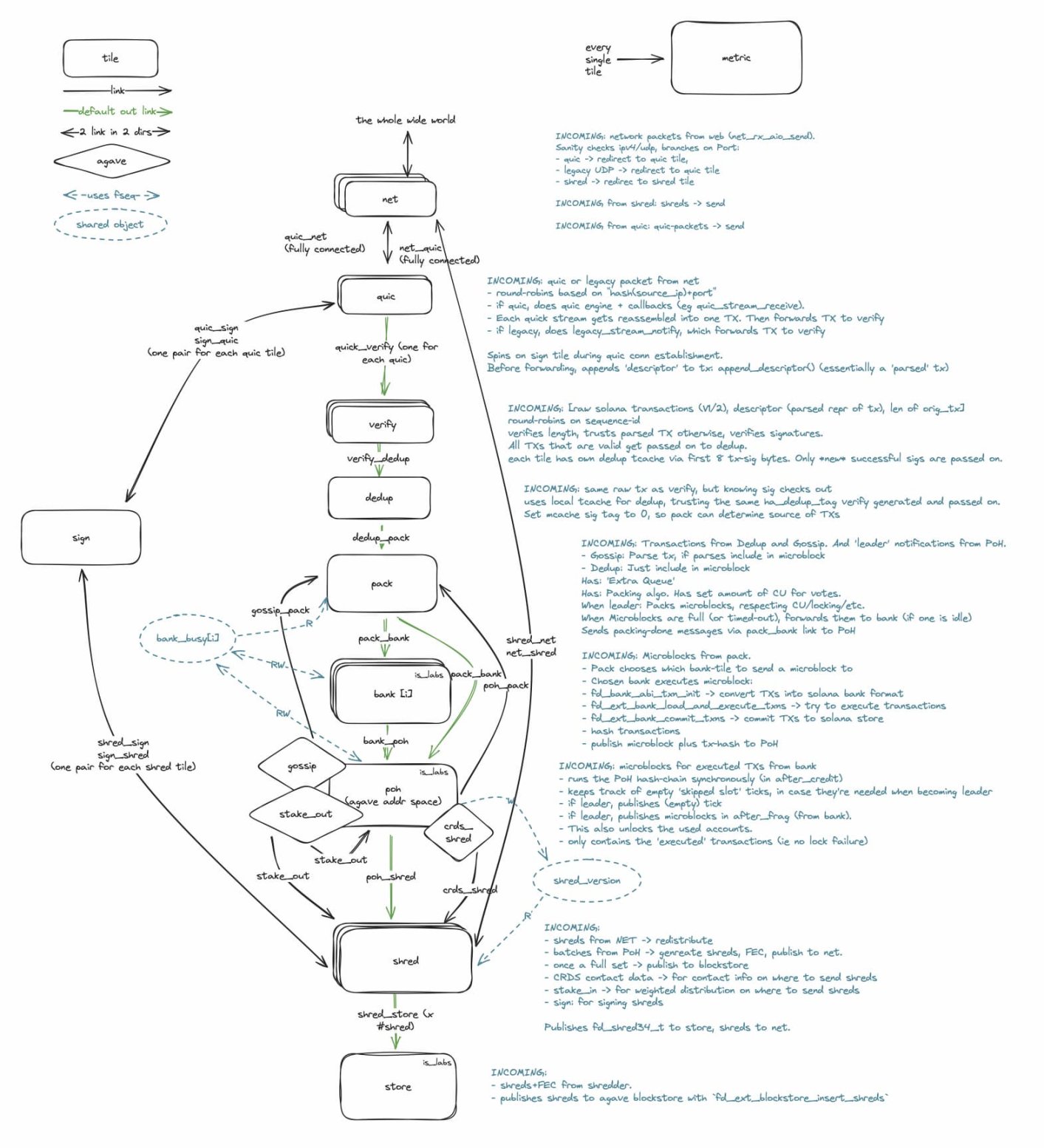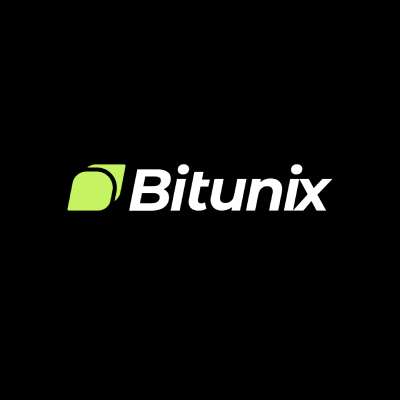Orijinal yazar: Karen, Foresight News
At last week’s Solana Breakpoint conference, the atmosphere was lively, ecosystem product releases followed one after another, and various colorful peripheral activities were the icing on the cake. In this feast, the highlight was the official launch of an early version of the Solana validator client Firedancer on the mainnet. This milestone achievement was given special attention, marking that the Solana network will achieve a qualitative leap in performance, while avoiding the risk of network downtime caused by a single client crash on Solana.
The development of Firedancer dates back to 2021 and 2022. As the second Solana validator client developed by Jump Trading Group (the original client Agave was developed by Anza), its original design was to eliminate single point failure risks and enhance the overall robustness and resilience of the network. Unlike the original Rust-based validator, Firedancer is written in C and does not contain Rust code. This choice significantly reduces the impact of potential vulnerabilities on the entire network and adds another solid line of defense to Solanas security.
How does Firedancer perform?
According to a presentation by Kevin Bowers, chief scientific officer of Jump Crypto, at the Solana Breakpoint conference, Firedancer demonstrated the ability to process more than 1 million transactions per second, a figure far exceeding Solana’s current theoretical limit of tens of thousands of TPS. Kevin Bowers also figuratively likened this achievement to widening a “country road” into an “interstate highway,” heralding the dual optimization of network costs and capacity.

Liam Heeger, core engineer of Jump Trading, shared the progress of Firedancer on the test network. The client has successfully produced more than 20,000 blocks and achieved a staking ratio of 1%.
Another engineer, Aryaman Jain, gave a demonstration that further revealed Firedancers performance under certain conditions. For example, in an environment with 10 validators, its TPS can reach millions, with more than 1.2 billion computing units processed per second, while also demonstrating a Blockspace capacity of 3.5 Gbps and a VM execution efficiency of 500,000 TPS.

How does Firedancer work?
Firedancer is built around three main components: high-performance computing stack and network stack, runtime, and consensus mechanism. The key to Firedancers ability to increase the performance of the Solana network to 1 million TPS (current protocol-level limitations limit performance to around 81,000 TPS) lies in its innovative architecture design and data flow optimization.
The validator adopts a concurrent model that performs diversified tasks through a small number of threads, each of which focuses on a specific task, such as network packet processing, transaction verification, block packaging, etc. This design maximizes resource utilization and significantly improves transaction processing speed.

Specifically, each thread performs one of 11 different jobs. Some jobs require only one thread to complete them, but some jobs require many threads to perform the same work in parallel. In addition, each thread has a CPU core to run on, and the thread has ownership of that core: it will never sleep or let the operating system use it for other purposes.
Firedancer also introduces an architecture called tiles, each tile represents a job and its running thread and assigned CPU core. This combination makes performance tuning flexible and efficient. For example, each tile of net and quic can handle >1 million TPS, while verify and bank tiles focus on transaction verification and block execution. Although their processing speed is relatively low, it is enough to meet the needs of high concurrency scenarios.
Firedancer official documentation lists 11 types of tiles, namely:
-
net: sends and receives network packets from network devices (can handle >1 million TPS per tile);
-
quic: receives transactions from clients, performs all connection management and packet processing to manage and implement the QUIC protocol (can handle >1 million TPS per tile);
-
Verify: Verify the cryptographic signature of incoming transactions and filter out invalid transactions (each tile can handle 200,000-40,000 TPS);
-
dedup: Checks and filters out duplicate incoming transactions;
-
pack: When becoming a leader, pack incoming transactions and intelligently schedule them for execution;
-
Bank: executes scheduled transactions (each tile can handle 200,000-40,000 TPS);
-
Poh: is a mechanism that continuously performs hashing in the background, mixing the generated hash values with the executed transactions to prove sequentiality and timeliness.
-
shred: distributes block data to the network when it becomes the leader; receives and retransmits block data when it is not the leader (throughput depends mainly on the cluster size. In the benchmark, if the cluster size is small, 1 tile can handle > 1 million TPS);
-
store: receives block data when becoming a leader, or receives block data from other nodes when other nodes are leaders, and stores it in a database on the local disk;
-
metric: collects monitoring information about other tiles and provides it to an HTTP endpoint;
-
sign: Holds the validator private key, and receives and responds to signature requests from other tiles.
It is worth noting that before Firedancer matured, its transitional version Frankendancer had already entered the Solana mainnet. Frankendancer is a hybrid of Firedancer and some Agave codes, combining Firedancers advantages in network stack and block production while retaining Agaves functions in execution and consensus. Firedancer was built completely from scratch and does not contain any Agave code.
What is the impact of Firedancer?
Undoubtedly, the launch of Firedancer will have a significant impact on the Solana ecosystem. It will greatly enrich the diversity of validators, further weaken the impact of single point failures on network stability, and build a more solid fortress for the reliability of the Solana network.
In addition, Firedancer maintains backward compatibility with existing protocols, ensuring a smooth transition of the ecosystem without requiring DApp developers and users to make major adjustments.
Although Firedancer is still in non-voting mode and is subject to ongoing optimization and review, this paints a more promising picture for the future development of the Solana network.
bakınız:
1. https://www.youtube.com/watch?v=InGI7BDUeX4list=PLilwLeBwGuK4eY3nT0vvvJ4GmcJLImcQEindex=14
2. https://firedancer-io.github.io/firedancer/guide/tuning.html
3. https://solanacompass.com/learn/Validated/firedancer-w-kevin-bowers
This article is sourced from the internet: A brief introduction to the highly anticipated Firedancer on Breakpoint
Related: 2024 Global Crypto Adoption Survey: Central and South Asia and Oceania Lead the World
Original author: Chainalysis Team Original translation: TechFlow See where your country ranks on the 2024 Chainalysis Global Crypto Adoption Index with this interactive map . This article is excerpted from our 2024 Geography of Cryptocurrency Report . We are excited to share the fifth annual Chainalysis Global Cryptocurrency Adoption Index. In each year鈥檚 report, we analyze on-chain and off-chain data to determine which countries are leading in grassroots cryptocurrency adoption. Our research highlights countries where unique cryptocurrency use cases are taking shape and explores why people around the world are choosing to embrace cryptocurrency. Read on to learn more: The global cryptocurrency adoption index approach; Changes in methodology this year; Top 20 Countries in the Global Cryptocurrency Adoption Index 2024; Key conclusions drawn from the index. Methodology for our Global…







